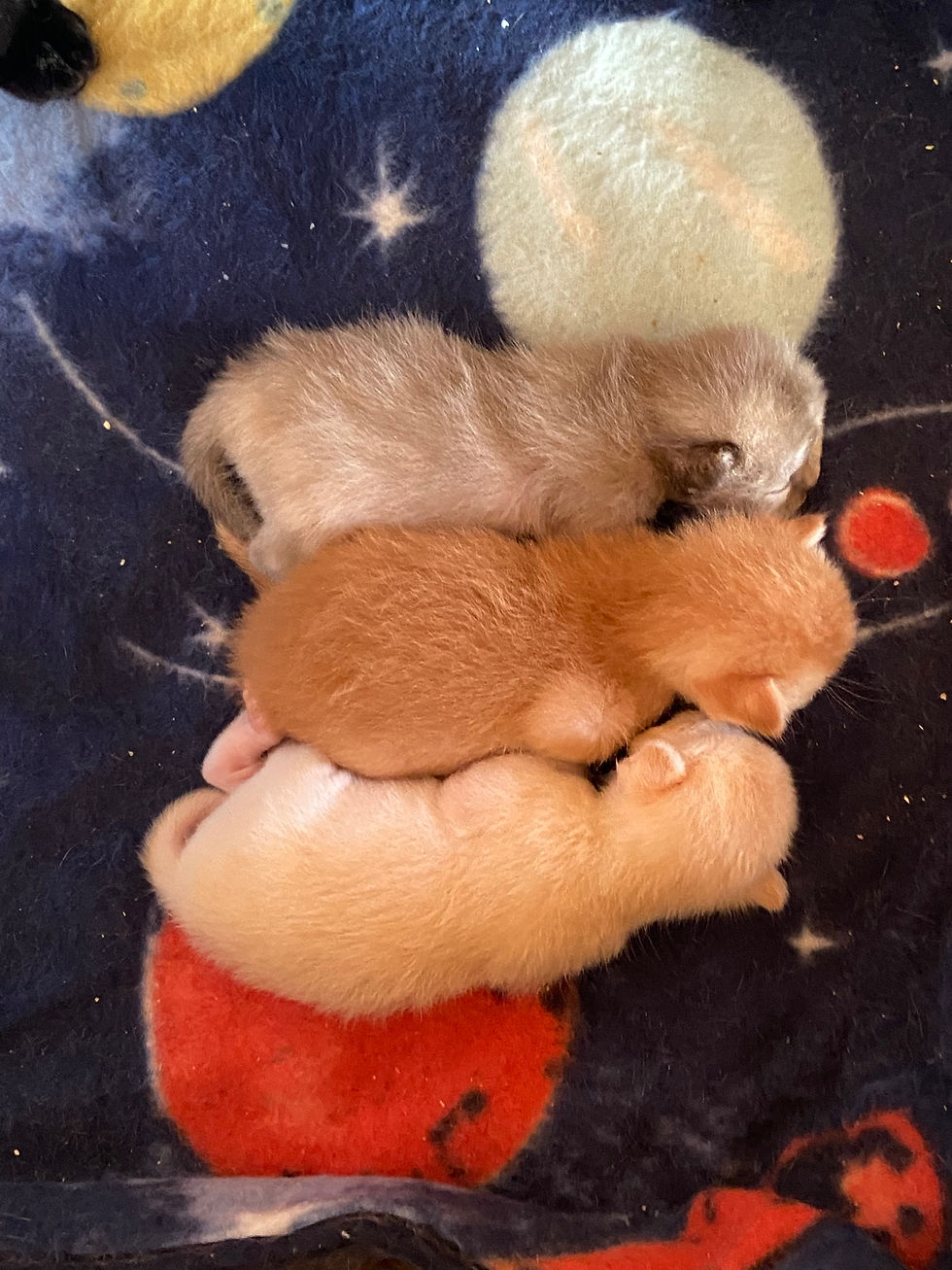Imminent Kitten Delivery: A Guide for New Cat Breeders
- miriamm00
- May 12
- 3 min read
So, your queen is nearly at the finish line — congratulations! If you're a new breeder, the final days before kittening can be both exciting and nerve-wracking. Here's a practical guide on what to look for, what to expect, and how to prepare when the big day is drawing near.
When Is She Due?
The very first question to ask is: What day did you put her in with the stud?
If your stud is experienced and knows what he’s doing, the gestation period is typically 65 days on the dot.
If it was a younger or inexperienced male, it can blow out to 69 or even 70 days, especially if the queen didn’t ovulate immediately.
Tracking the date of mating is key for planning, but always remember there’s a bit of natural variation.
Signs You’re Getting Close
Here are the classic cues your queen is preparing for labour:
1. Physical Changes
Nipple and breast development happens around Day 61 or about 4 days before delivery. It’s especially noticeable in first-time mums.
2. Behavioural Changes
Around 3–4 days before labour, queens can get agitated — bolting out of their enclosures, picking fights, and seeming generally irritable.
Nesting behaviour kicks in: she’ll shred up paper, drag around her blankets, and rearrange her space. I personally recommend polar fleece blankets (I grab mine from Temu) — they’re absorbent and safe, with no folds for kittens to get trapped under.
3. Gastrointestinal Signs
Constipation can cause issues during delivery so if she's constipated a 1 mL dose of lactulose a couple of days before (from your vet or pharmacy) can gently move things along — and yes, it can also help speed up delivery by making her more comfortable.
Should You Get an X-ray?
In most cases — no. It won’t change your management. The only time I’ve opted for an x-ray is when we had a complicated delivery, and we needed to decide whether to wait or go for a c-section. The scan showed three more kittens, and we went straight to surgery.
The Final Countdown: What to Watch For
🚫 6–12 Hours Before Labour
She’ll go off her food. If she was ravenous yesterday and uninterested today, things are happening.
🕰 2–3 Hours Before Labour
She becomes restless and clingy — you might find she wants you to sit with her, sometimes not leaving your side.
❗ Blood-Stained Mucous
A bloody discharge is often the first clear sign labour is beginning. You’ll likely see kittens within an hour or two, but don’t panic if it takes up to 8 hours — especially with first-timers. Just keep her calm, quiet, and supervised.
Final Tips
Keep calm. Your energy sets the tone — if you’re frantic, she will be too.
Have your vet’s number saved and charged phone on hand just in case of complications.
Make sure you have a suitable box to take her to the vet if you need to - I just pickup my 90L plastic birthing box and take that.
Don’t intervene unless necessary. Most queens are great mums and just need you to be nearby, not hands-on.
This is one of the most rewarding parts of breeding. Watching those tiny new lives come into the world is unforgettable. Good luck, and may your kittens arrive safely and snooze soundly. (on my next post I will give you the tips and tricks I've learned over the years to make the delivery run smoothly).
Below is Claude, the proud mama of her 7 babies.

(see my storage boxes that I use as birthing boxes, they have a clear side that folds down which gives you a table to work on and when the box is on the floor can be used as a ramp for the little kittens who're starting to walk).




Comments